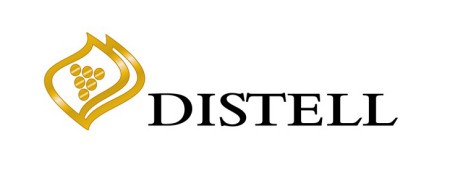Distell communications plan for the new business strategy


Strategy consulting: Communications plan for Distell’s new business strategy
In 2014, Distell changed its business strategy and commissioned Stone to develop an integrated plan to communicate the new strategy, business intentions, and new values of the business to all its employees across the world; oversee the implementation thereof; and provide detailed feedback to Distell afterwards.
Client profile
Distell Group Limited, commonly referred to as Distell, is a multinational brewing and beverage company, based in South Africa, with offices in France, Scotland, Botswana, Singapore, Sao Paulo, New York, London, Dar es Salaam and Windhoek. Distell is South Africa’s leading producer of wines, spirits, cider and other RTCs (Ready-to-drink). This include, among others, brands like Savanna and Hunter’s ciders; Amarula liqueur; Klipdrift brandy; Nederburg and Durbanville Hills wines; Burn Stewart, Three Ships and Bain’s whiskies; and Bisquit cognac.
The challenge at hand
When Richard Rushton took over as managing director of Distell in 2014, Distell’s business strategy was revised. In order for this new strategy to be implemented successfully, buy-in from all Distell employees on all levels and across all offices across the world was crucial. A comprehensive communications strategy was needed to successfully and systematically roll out the new business strategy to all employees as a matter of urgency.
One of the major challenges was to adapt the message about the new strategy in such a way that it could be communicated sensibly to the different target groups – from senior managers to factory staff, and across all cultures and nationalities. It was of the utmost importance that the strategy be communicated in the right context and language to the different target groups and that the message be adapted to every audience so as to not communicate unnecessary or irrelevant information.
Distell also required detailed feedback from these groups to further refine communication on the new strategy, address concerns, and implement suggestions from the target groups into the various business units where applicable.
The goal with this communication strategy was to get employees’ buy-in and support for the new direction Distell was taking. Distell wanted its staff to be fully informed, motivated and excited about the new business strategy. They should understand the context for change, and have clarity on the strategy at both corporate and business unit levels and what purposeful actions are needed to accelerate strategy implementation. The strategy should be a call to action behind behaviours required to live the “new” Distell values.
Stone’s approach to meeting the need
In order to gather as much information as possible to provide Distell with a comprehensive and effective communications strategy, several meetings with the Distell executive team including MD Richard Rushton, the communications department, human resources, as well as other parties involved, were held in advance and continued throughout the process.
Stone developed a strategy which centred around engagement sessions with the various staff groups in Distell, called “Playing to Win” sessions. During these sessions the new strategy would be explained, negative and positive input obtained, and discussions held in a safe and supported environment. Each target group was also expected to not only understand the new business strategy, values and goals of Distell, but also how this should be implemented in their specific business unit.
A communications strategy was also developed for the period leading up to the Playing to Win sessions to build positive anticipation and eliminate negative assumptions made on hearsay. Stone also managed the executing of this part of the strategy which included regular email communication to all employees with internet access, also from the MD, providing staff without internet access with a channel to obtain more information, receive messaging from executives and provide some feedback, as well as an article in the in-house magazine.
At the Playing to Win sessions, Stone made detailed notes of all input, discussions, concerns and ideas from the employees of the relevant business unit. Afterwards these notes were interpreted and summarised in such a way that the business unit could utilise it when planning the implementation of the new business strategy into their department. It also served to inform senior management about the “big picture” of each business unit’s stance on the new strategy. This enabled them to adapt and improve further implementation of the strategy to the rest of the company.
At these sessions internal facilitators (from Distell Change Practitioner community) were trained and equipped to facilitate future Playing to Win sessions to target groups throughout the company.
Results achieved and value added for Distell
It was clear from the feedback received at these sessions that employees felt motivated about playing their role in implementing Distell’s new strategy. The sessions created an environment where they felt valued and could therefore freely express their ideas and concerns. These sessions showed that staff understood the impact of the new strategy on their business unit and how to execute it. After the sessions, employees had a positive disposition towards the changes in business strategy and a collective excitement about the company’s direction, future success and opportunities.
Information gained at these intensive staff sessions was immediately utilised to refine further communication about the new business strategy and values. Suggestions and concerns were taken seriously and most of them are being addressed. This resulted in further motivating staff members to buy into the implementation of the new strategy.



